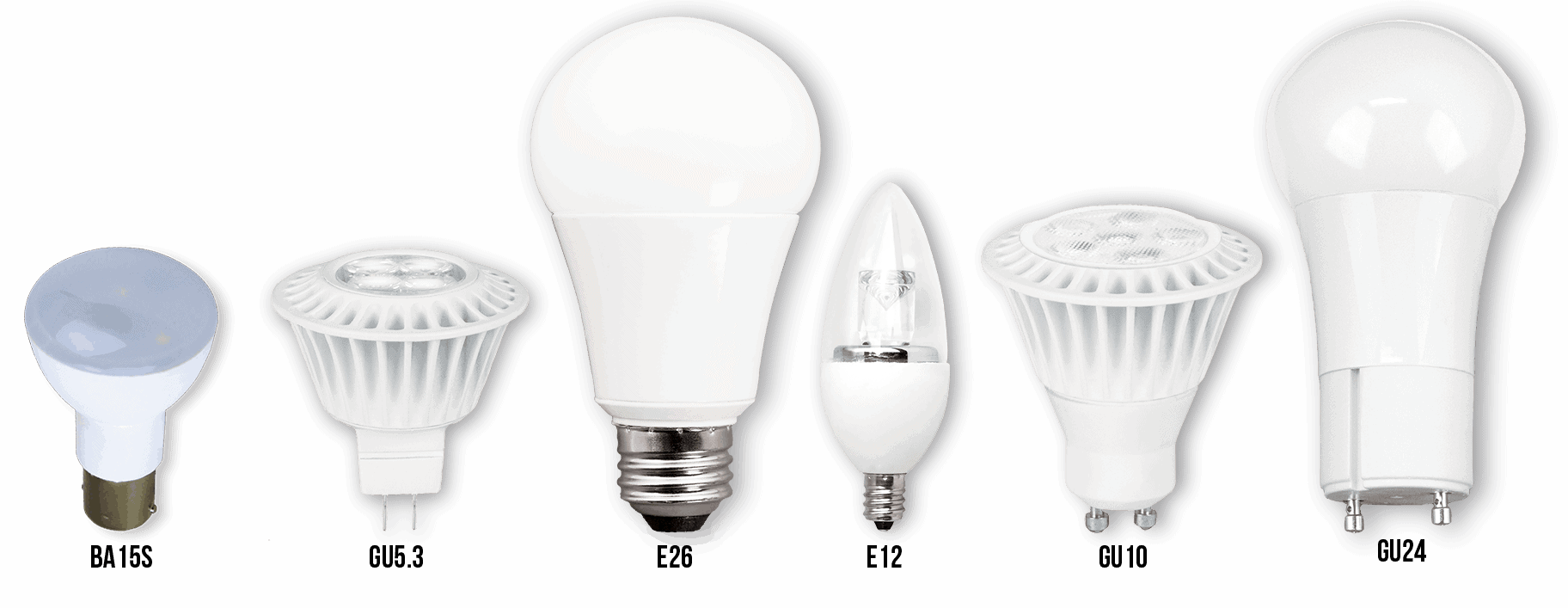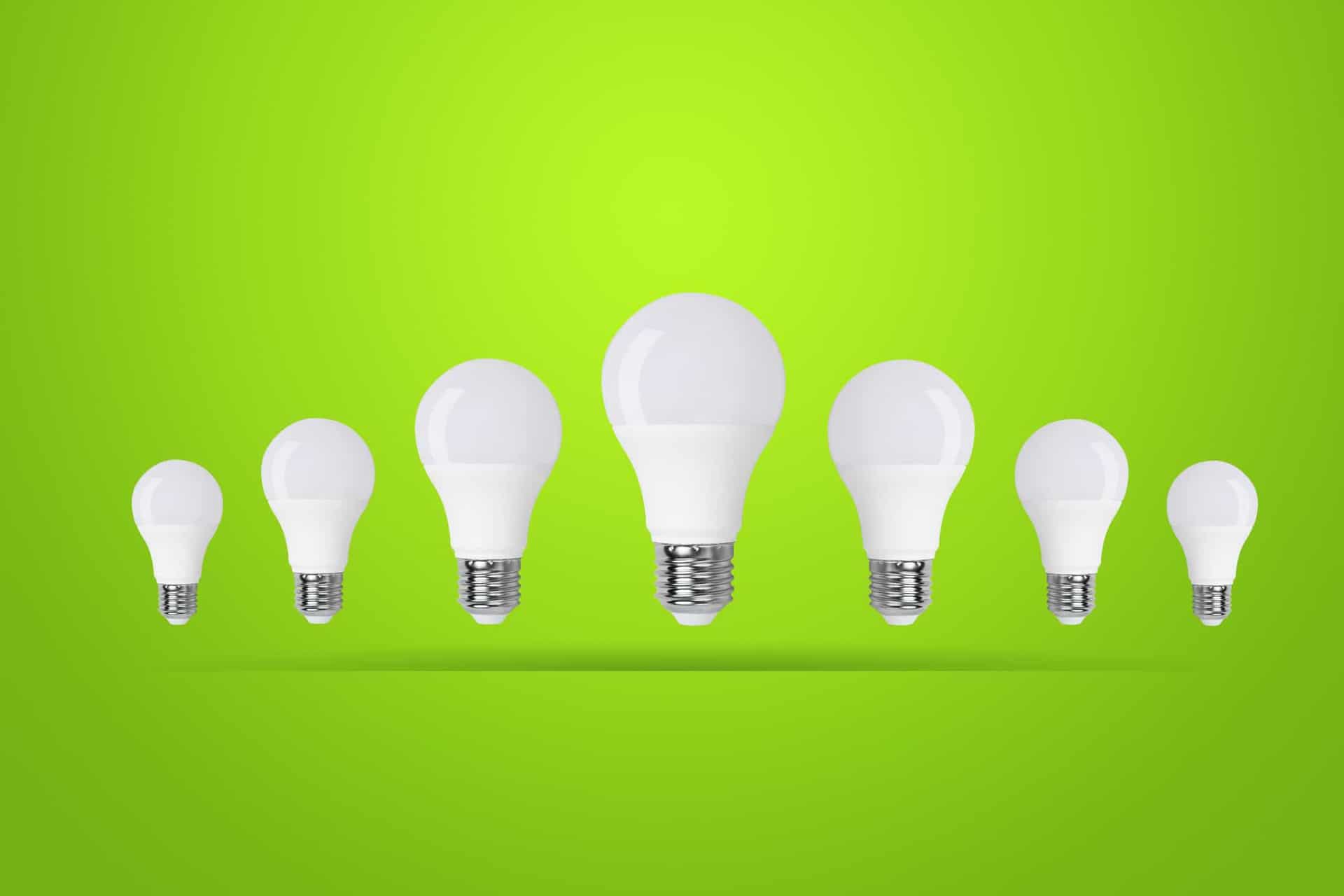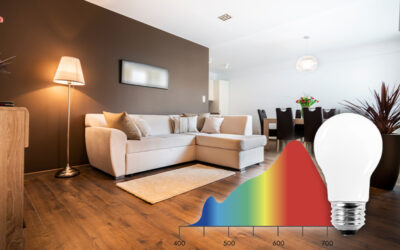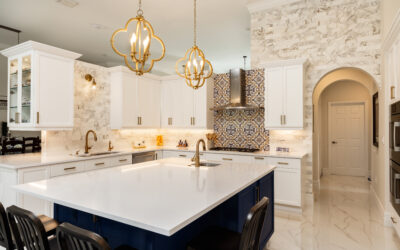LED Anatomy
Read below to learn about the parts of a LED and how they work together to create the most energy-efficient light source on the market.
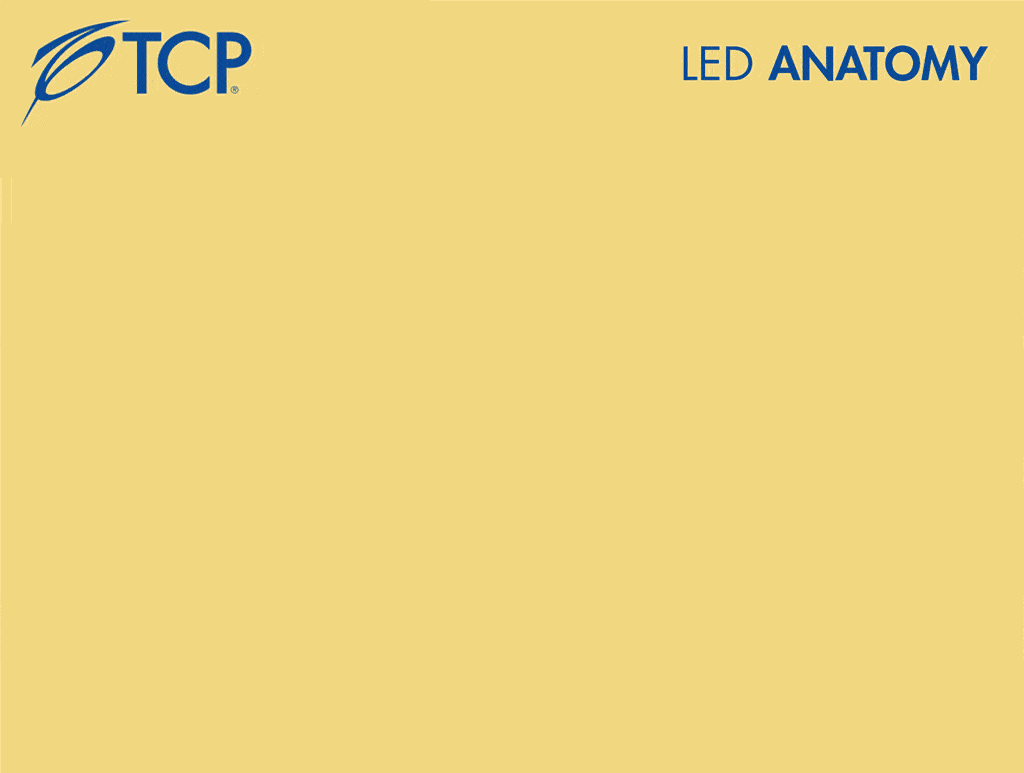
Lens/Optics
Due to the brightness of LEDs, a lens (or optics when used on omni-directional lamps) is used to evenly distribute the light. This helps the LED have the look and feel of a traditional light bulb. This piece is also usually made of plastic to reduce the risk of shattering. Essentially, the lens/optics controls the characteristics of the way the light is dispersed.
LED Chips
LED chips are the components that create the light (the diodes). They are small yellow LED pieces attached to a piece of metal, referred to as the PCB (printed circuit board). There are two main types of chip configurations you can find in TCP lamps:
- Chip on Board (COB) – COB is a single LED chip on PCB, creating a clean, uniform beam pattern.
- Discrete – Discrete chip configurations are multiple LED chips placed on PCB.
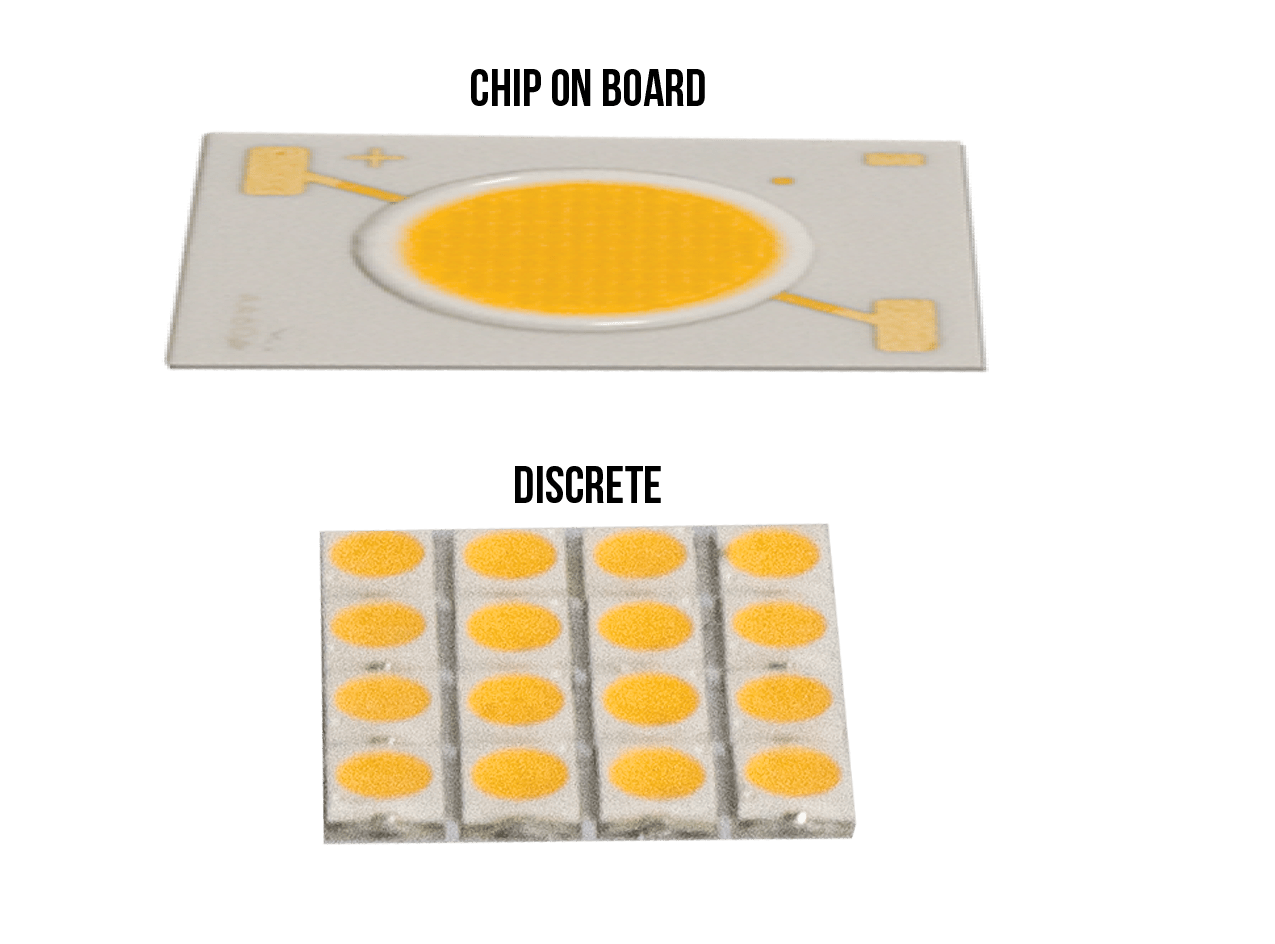
Heat Sink
The heat sink is the piece of metal the LED chips sit on. Heat needs to be conducted away from the LED and then cooled somehow – this is where the heat sink comes in. They provide the path for heat to travel from the LED light source to outside elements.
Circuit Board / Driver
The circuit board, also referred to as the driver, takes energy from the socket and tells the LEDs to turn on and off, dim and sometimes even change color. LED drivers are similar to ballasts in fluorescent lamps. LED drivers also protect LEDs from voltage or current fluctuations. A change in voltage could cause a change in the current being supplied to the LEDs.
Housing
The circuit board heats up when energy passes through it, making it necessary for heat-conductive housing. This housing component is usually made with aluminum. The housing will still be warm to the touch, but not as hot as halogen, incandescent or fluorescent lighting.
Base
LEDs are designed as a direct replacement for existing light bulbs. They can also be found with any base that traditional bulbs are available in. There are many types of lamp bases that TCP products have:
